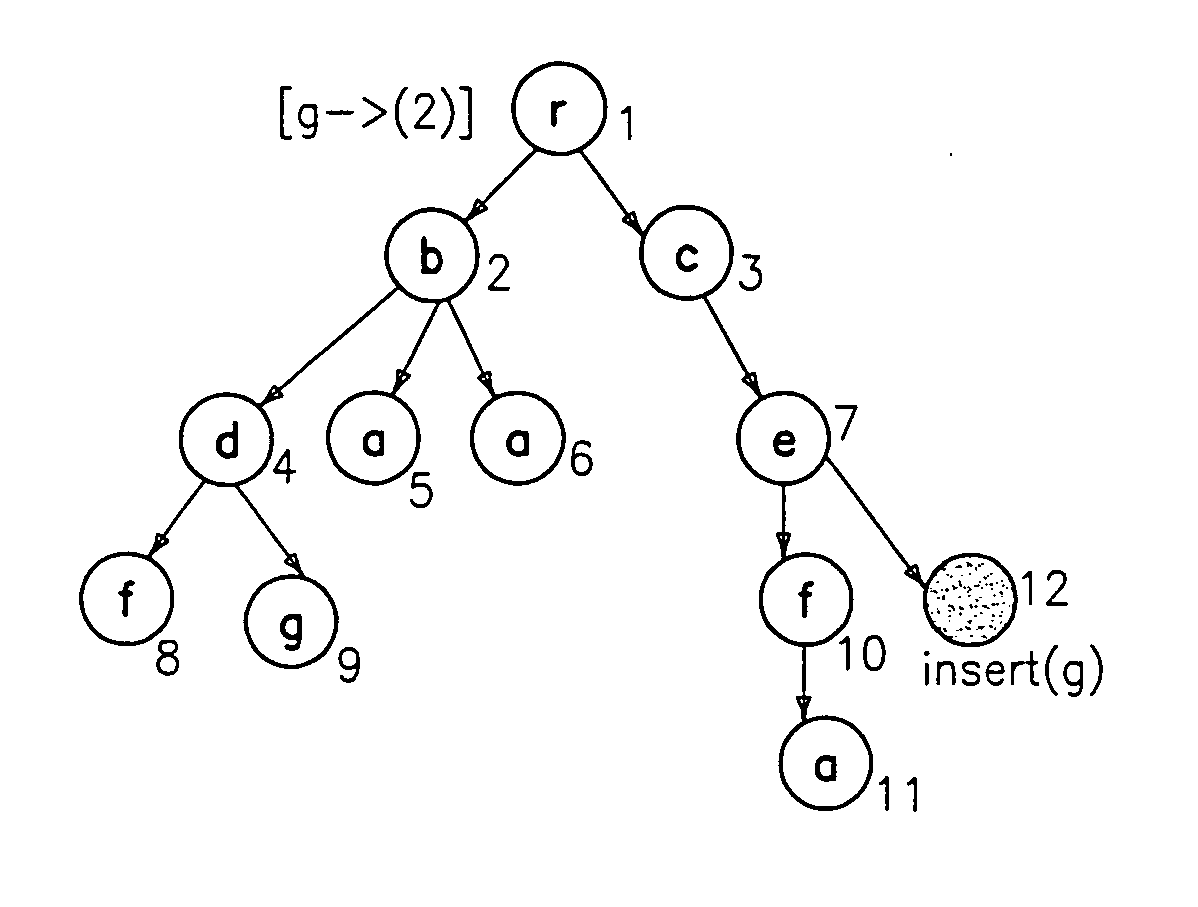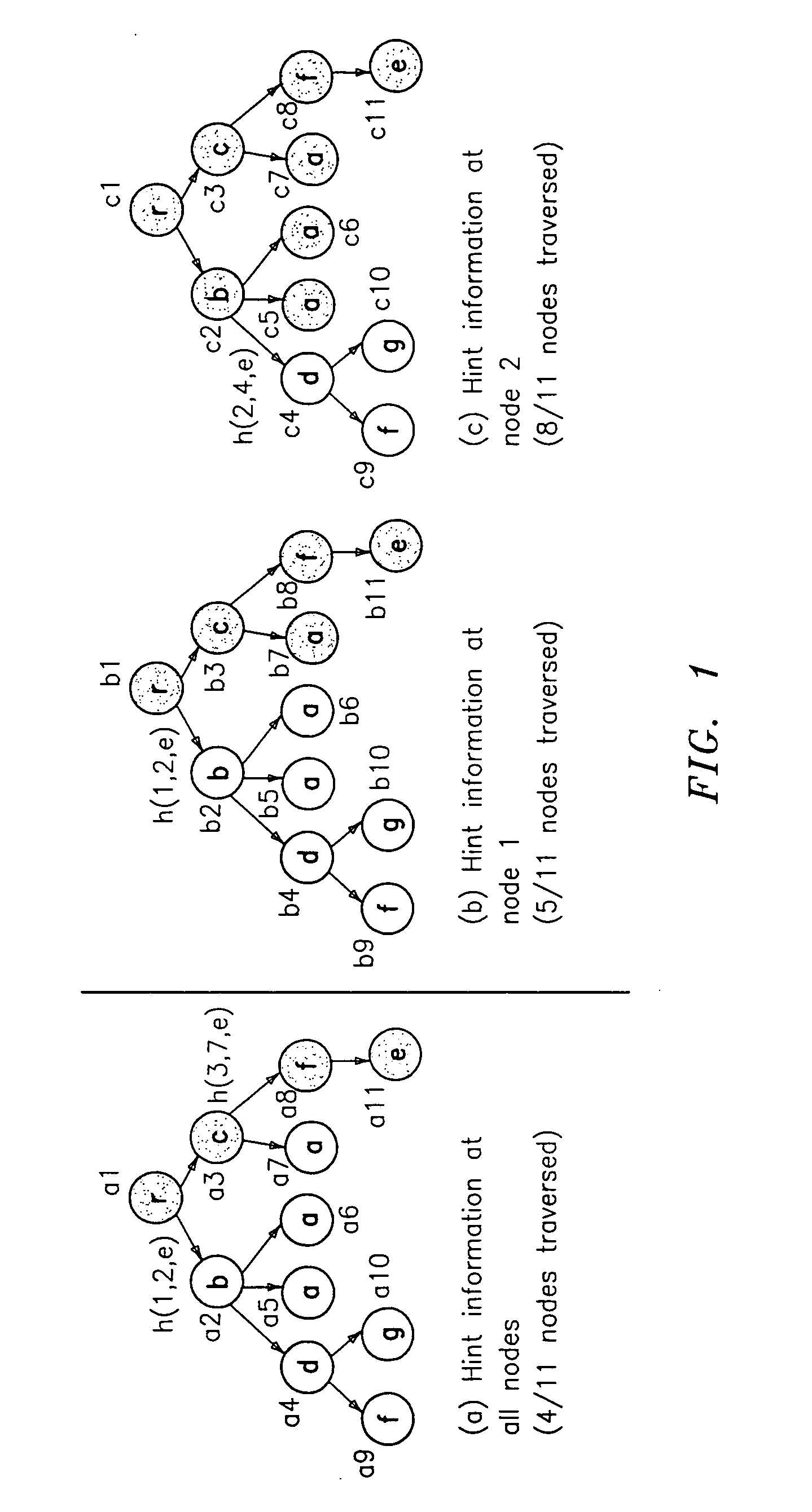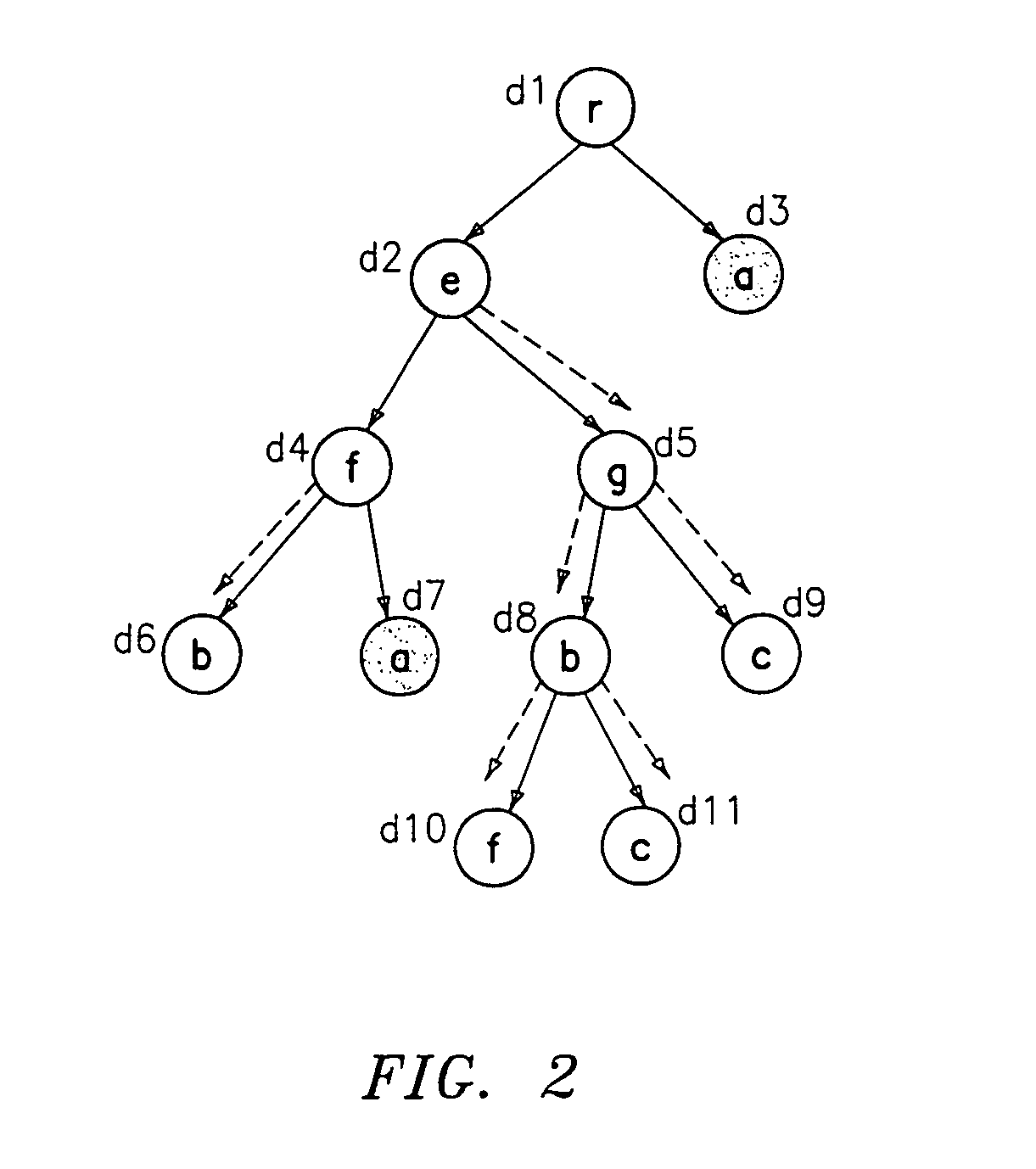Selective path signatures for query processing over a hierarchical tagged data structure
a data structure and hierarchical tag technology, applied in the field of navigation of xml documents, can solve the problems of insufficient dynamic restructure, inability to maintain an exhaustive set of xml indexes, and inability to optimize tasks
- Summary
- Abstract
- Description
- Claims
- Application Information
AI Technical Summary
Benefits of technology
Problems solved by technology
Method used
Image
Examples
Embodiment Construction
Preferred embodiments of the present invention will now be described in detail with reference to the annexed drawings. In the drawings, the same or similar elements are denoted by the same reference numerals even though they are depicted in different drawings. In the following description, a detailed description of known functions and configurations incorporated herein will be omitted when it may obscure the subject matter of the present invention.
XPath, (see J. Clark and S. DeRose, “XML Path Language XPath”, 1999, found at http: / / www.w3.org / TR / xpath.) and XQuery, (see S. Boag, D. Chamberlin, M. F. Fernandez, D. Florescu, J. Robie, and J. Simeon, “XQuery: A Query Language For XML”, 2002, found at http: / / www.w3.org / TR / xquery / ) provide a powerful path query syntax such as wildcard and descendant queries. To take advantage of the flexibility of these languages, the query engine needs to incorporate sophisticated optimization techniques. Since XML query languages such as XPath and XQ...
PUM
 Login to View More
Login to View More Abstract
Description
Claims
Application Information
 Login to View More
Login to View More - R&D
- Intellectual Property
- Life Sciences
- Materials
- Tech Scout
- Unparalleled Data Quality
- Higher Quality Content
- 60% Fewer Hallucinations
Browse by: Latest US Patents, China's latest patents, Technical Efficacy Thesaurus, Application Domain, Technology Topic, Popular Technical Reports.
© 2025 PatSnap. All rights reserved.Legal|Privacy policy|Modern Slavery Act Transparency Statement|Sitemap|About US| Contact US: help@patsnap.com



